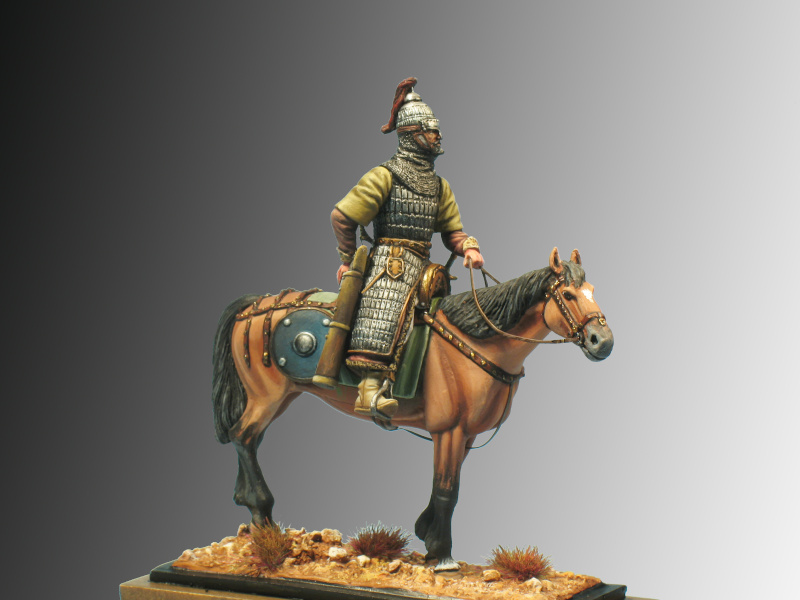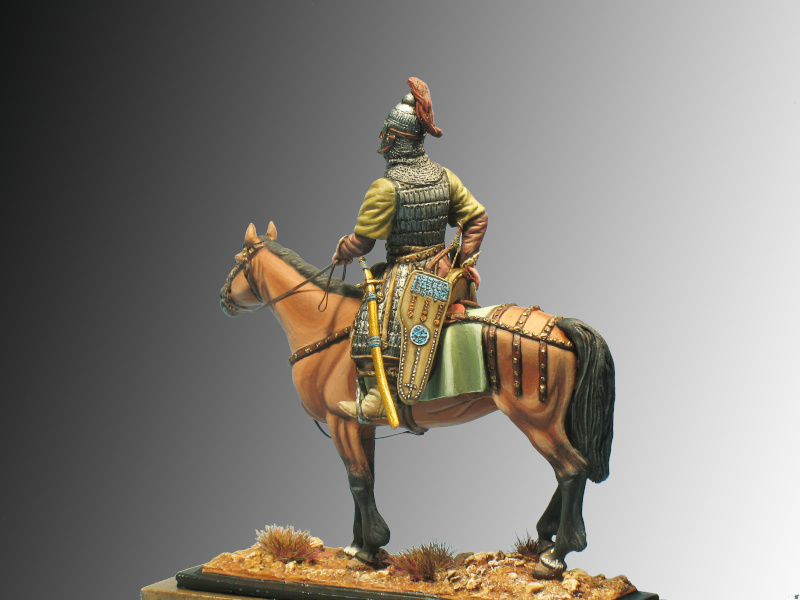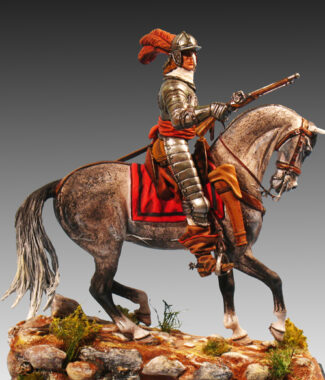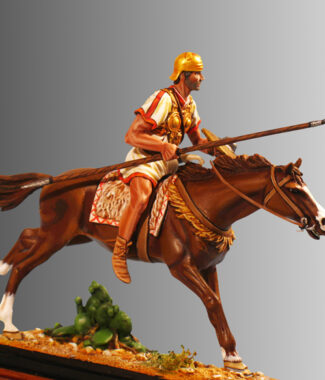You must be logged in to post a review.
Avar heavy horseman – 626
€68.00
Figure to assemble and paint
Ref.: 8 – PCA
Weight: 240 grs.
Material: White Metal
Number of Pieces: 15
Historical Review:
The Avars were an ancient people of Caucasian origin, originally from the Central Asian steppes, who migrated westward after the collapse of the kingdom of the Huns in the 6th century AD. There is no clear information about their origins. For some time, they were considered a people of the Tungusic or Mongol group, but today they tend to be ascribed to the Turkic or Iranian ethnic group, as some words are known in their language that seem to be closely related to the Turkic language.
Their original settlement was in the northern Caspian Sea. By the 5th century AD., they formed an important empire on the edge of the Turkestan plateau, which, aided by the military prowess of its horsemen, engaged in several clashes with the mighty Chinese Empire. In the early decades of the 6th century, as with other barbarian peoples, pressure from the Huns caused them to migrate westwards across the Caucasus, settling in the Volga region.
During the first half of the 6th century AD., the Avars’ policy of expansion was aimed at the Balkan Peninsula. Later, around 565 A.D. they established themselves in the Pannonian Basin and Lower Styria, from where they also managed to dominate the territory between the left bank of the Danube and the Tisza River. The high point of their rule came in 582, when they conquered the important enclave of Sirmium (near present-day Belgrade) in the east and the city of Trier, the former seat of the Prefecture of the Roman Praetorium, in the west. From 582, the Avar horsemen dominated the area of central Europe and established a powerful independent kingdom, dealing continuous blows to the Frankish kingdom, which bordered their territory to the west.
At its peak, the kingdom of the Avars stretched from the Adriatic to the Baltic, and from the Elbe River to the Dnieper. Allied with some Alano groups, they even confronted the Eastern Empire and attacked Constantinople in 619 and 626. Emperor Heraclius was, however, able to repel them to the northwest in 640.
In 680, the rebellion and emancipation of the Bulgars, led by their leader Kubrat, marked the beginning of the dissolution of the Avar kingdom. As a result of their difficulties in the east, the Avars then launched themselves against the West, and became a serious threat to Italy and the Frankish kingdom. But they were defeated and forced to baptise by Charlemagne in 791. Although they staged a strong revolt in 799, they were again defeated and entered a rapid process of dissolution and assimilation by the Franks.
The Avars were the first to bring stirrups to Europe. The true stirrup, made of metal and suspended by straps, was known in China as early as 477, according to the biography of a military man of the time, who adds that it came from the nomadic peoples of the great Central Asian steppes. Irrespective of their more ancient origin, stirrups were common in the 5th century among various Asian mounted peoples and in particular among the Avars, who introduced them into the Byzantine Empire.
The saddle used by the Avars was of the stirrup type, formerly used by the Huns, but improved for use with stirrups, and in addition to the girth it was held in place with a breastplate and a stirrup to prevent it from shifting.
The figure shows a heavy horseman. He carries full lamellar armour, the multi-segmented helmet, from Central Asia, also used by the Gepids and Lombards, peoples who had had contact with Iranian culture and speech and with Turkic nomads, so it is not surprising to find many aspects of Central Asian weaponry that travelled with them to the West. In this case he has a Turkish proto-sabre with a shallow curve, consistent with the 8th-10th century AD., the date of the figure. It also carries a small bow widely used by these and other peoples from the Asian steppe.
NOTE
We would like to give special thanks to Aris Stamou, friend and excellent miniaturist who, thanks to his deep military knowledge of antiquity, has been of great help to us in in the clarification of those doubts related to the correct reproduction of the helmet, small bow, sabre, and other details.








Reviews
There are no reviews yet.